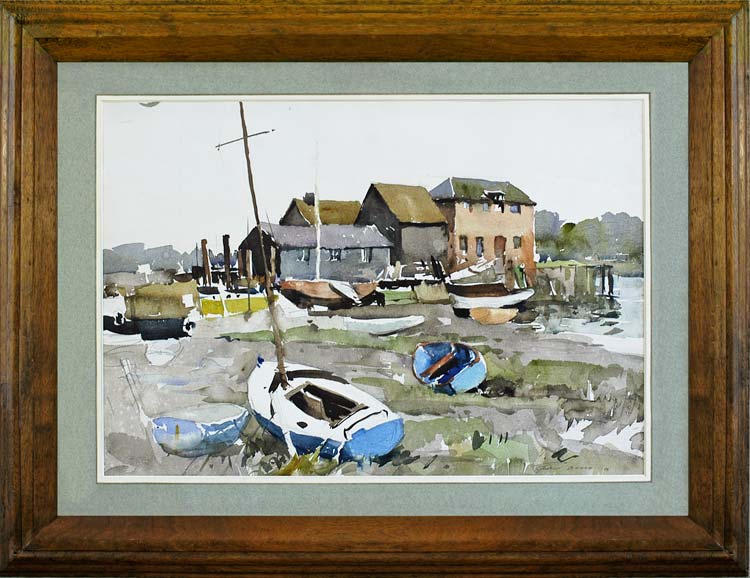This watercolour is particularly revealing of Wesson’s methods, with its rapidly-executed pencil under-drawing and super-imposed washes, which magically resolve themselves into a graphic description of banks, grass, sand and water. The areas of bare paper become as important as the painted surface, increasing the liveliness and luminescence of the whole.
Biographical details
Edward Wesson was born in Blackheath, London, spending much of his life in Kent. He was self-taught, and generally disparaging of art schools; however, he himself taught – both formal courses and through evening demonstrations to art societies. He served in the Second World War, in Sicily and mainland Italy, managing to develop his technique even under campaign conditions. He was elected a member of the Royal Institute of Painters in Watercolour (RI), the Royal Society of British Artists (RBA), and the Royal Society of Marine Artists (RSMA), besides exhibiting at the Royal Academy and the Royal Institute of Oil Painters. His true love was watercolour, for which he displayed an extraordinary facility, his bravura technique forming the centrepiece of his demonstrations. He was influenced, amongst others, by Eugène Boudin.
He produced commercial art designs, notably artwork for greetings cards, travel posters of scenery for British Rail and designs for the Post Office Savings Bank; he wrote articles for The Artist and Leisure Painter, and produced an autobiography, My corner of the field, in 1982. An award in his name is offered at its annual exhibition by the Royal Society of British Artists.
Works in public collections include River meadow landscape (Guildford House Gallery); High force on the Tees and Richmond from the river (both British Railways Poster Artwork, York, National Railway Museum).
See The Art of Edward Wesson, Ron Ranson, London, new ed., 2004.


